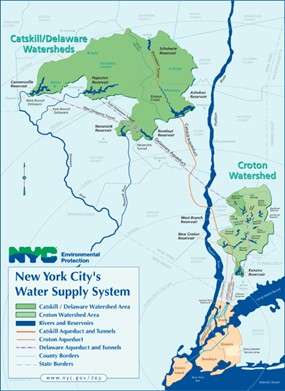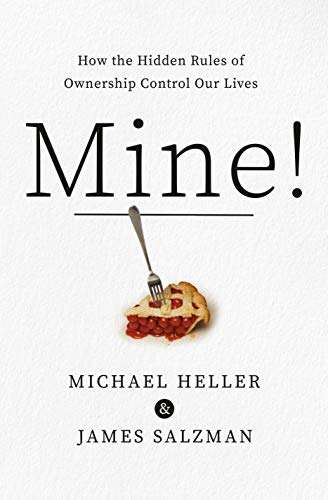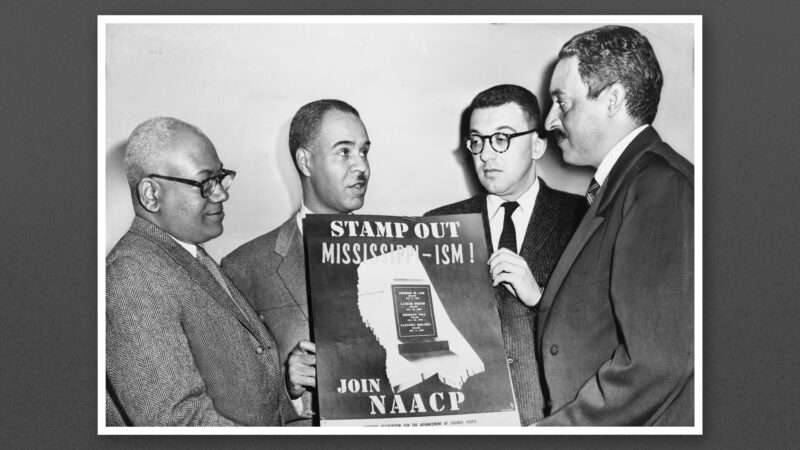A majority of California’s K-12 schools have been closed for in-person instruction for an entire year. During this time, the federal government has given California schools about $8 billion to retrofit buildings for better ventilation, to stock up on masks and sanitation gear, to create rapid COVID testing procedures, and to reconfigure classrooms to maintain more distance between students.
Even California Governor Gavin Newsom, who has overseen one of the strictest lockdowns in the nation, says it’s time for schools to re-open for in-person instruction—now.
“If everybody has to be vaccinated we might as well just tell people the truth,” Newsom said during an online symposium with school administrators. “There will be no in-person instruction in the state of California.”
The state government has also earmarked an additional $2 billion for school districts willing to re-open K-2 classrooms by the end of March. That’s still not enough to appease California teachers unions, many of which continue to oppose in-person instruction despite a growing scientific consensus that it can be done safely.
“If you condition funding on the reopening of schools,” said United Teachers Los Angeles (UTLA) President Cecily Myart-Cruz on the union’s YouTube channel, “that money will only go to white and wealthier schools that do not have the transmission rates that low-income black and brown communities do.” UTLA didn’t respond to Reason‘s interview requests.
California’s resistance to re-opening is part of a national movement, backed by organized labor, to keep American school children at home until all teachers, staff, and—in some people’s opinion—even students are offered the chance to be fully vaccinated. It’s a requirement that many scientists say is far too stringent. Continuing to keep schools closed, they argue, poses a bigger risk to children.
“As difficult as it was to close school classrooms, reopening is even harder,” said Austin Beutner, Los Angeles’s top education official. “We cannot, and will not, compromise on health and safety.”
Beutner, who declined to be interviewed by Reason, has said that schools will not reopen until all of the district’s faculty and staff are offered vaccines, and even then the union doesn’t want to reopen until community spread is much lower.
Los Angeles County recently made all of its approximately 85,000 school district employees eligible for vaccination but, because of supply shortages, it isn’t clear whether the health department can reach that benchmark before the school year is over.
Anthony Fauci and the Centers for Disease Control and Prevention agree that 100 percent vaccination shouldn’t be a prerequisite for school reopening.
“[It is] rather impractical to make that a sine qua non [without which, not] of opening the schools,” Fauci said in a February 17 White House briefing.
Ernesto Falcon is the father of a 3- and a 5-year-old and a member of Open Schools California, a coalition of parents pushing for schools to reopen in person without delay.
“The damage to the kids is enormous,” Falcon tells Reason. “They don’t have a powerful political constituency, with millions of dollars at their hands in Sacramento. They have us, they have parents.”
The California Teachers Association, which didn’t respond to our interview request, has been running ads with a safety-first message.
“COVID’s still a threat,” one ad’s narrator says over images of headlines reporting hundreds of cases in California schools. “And on reopening schools, we know what happens when we don’t put safety first.”
Brown University economist Emily Oster believes that, for the most part, transmission is not occurring in schools. Oster created a national database that tracks the spread of the disease in schools. Its evidence suggests it is possible to operate your school safely even without a vaccine.
“There are many, many districts, including districts in dense urban areas, serving a lot of students of color that have been open since September, without teacher vaccinations, and have been operating safely,” Oster tells Reason. “To say that somehow it is only possible to operate schools safely once teachers have been vaccinated—I just don’t think the data supports that.”
The teachers union is misleading the public about what the evidence actually says. A headline that says “San Diego County had 283 school COVID-19 cases in two months” appears in its TV ad. The headline did appear in The San-Diego Union Tribune, but the end, which said “but data are limited,” was cut out.
The cases referenced were merely “associated” with K-12 schools, and there is no evidence that they were contracted in classrooms. The article goes on to explain that although 237 students district-wide tested positive, that’s out of 500,000 students—a positivity rate of 0.05 percent.
Another headline in the ad reports of an outbreak of COVID-19 at a high school, which forced hundreds of students into quarantine. The headline did appear in The Sacramento Bee, but the outbreak saw a total of 33 students test positive for COVID in a district of 11,500—a positivity rate of 0.2 percent.
Another claim that union and school district representatives often make is that reopening schools without vaccines will place racial and ethnic minorities disproportionately at risk. Oster says that these are the very communities that are disproportionately harmed by school closures.
“Kids who live in richer districts are getting a much different schooling environment than many kids who live in worse off districts and COVID has only made that worse,” she says. “The differences in the quality of the remote education in the spring, the differences in the reopening rates in the fall, the differences in the quality of remote education in the fall, all of these things have contributed to highlight these very bad inequities.”
Falcon says he’s offended by talk of equity, given that students at most of California’s private schools have had in-person instruction for months. This includes the governor’s children.
“All the private schools are open in this area,” says Falcon. “All the public schools for the wealthy are open now, and it’s the middle class and poor that don’t have their constitutional right to free education.”
“I’m a first-generation American. My parents are immigrants. They grew up poor in South America,” Falcon says. “If it wasn’t for education and access to education for them, they would not be professionals and live the comfortable life [they live today].”
Falcon, a public advocacy attorney and a longtime proponent of public education, says he’s been shocked by the teachers unions’ efforts to obfuscate the evidence on school reopening.
He was also outraged when board members at one Bay Area school district suggested that parents wanted in-person schooling so they wouldn’t have to watch after their own kids and could stay home smoking weed. The board members didn’t realize that the meeting had started broadcasting, and they ended up resigning.
“I actually started my own union where I work, and so I know exactly what collective bargaining is for,” says Falcon. “To use that power to keep the schools closed longer than the health and science authorities say is safe and right is really an abuse of collective bargaining.”
Recent polls suggest that a majority of Americans favor fully vaccinating all teachers before reopening, but Oster predicts that public opinion will shift as more schools reopen and Americans see for themselves that it’s not particularly dangerous.
“I think the thing we need to recognize is the first moments of going back are going to be the most nerve-racking,” says Oster. “Once people see that this is something we can do safely, they will be interested in opting in.”
Despite the $6.6 billion earmarked for reopening, many unions, including United Teachers Los Angeles, continue to oppose reopening until all teachers who want the vaccine have received it. But the state’s agreement doesn’t require local districts to negotiate with unions on reopening.
Falcon says that his faith in the public school system is shaken and that he is seriously considering sending his kids to private school.
“The teachers unions are not understanding the extent they are losing more and more parents who are going to private school right now, who are not going to look back,” Falcon says. “And when different politicians will say, ‘Hey, we need to boost private schooling instead of public schooling,’ they’re going to have more people supporting that idea than less.”
Falcon says he wants to support public education, “but if my kid is going to be denied and screwed by the way the system works, what am I supposed to do?”
Produced by Zach Weissmueller. Graphics by Paul Detrick.
Photo credits: Gado Images/Smith Collection/Gado/Sipa USA/Newscom; David Crane/ZUMA Press/Newscom; David Crane/ZUMA Press/Newscom; Dean Musgrove/ZUMA Press/Newscom; Dean Musgrove/ZUMA Press/Newscom; Al Seib/Los Angeles Times / Polaris/Newscom; Lev Radin/Pacific Press/Newscom; Ringo Chiu/ZUMA Press/Newscom; Ringo Chiu/ZUMA Press/Newscom; John-Marshall MantelJohn-Marshal/Polaris/Newscom; Pool/CNP/Pool via CNP/InStar/Cover Images/Newscom; Lev Radin/ZUMA Press/Newscom; Lev Radin/ZUMA Press/Newscom; Jim Ruymen/UPI/Newscom; Ringo Chiu/ZUMA Press/Newscom; Jana Birchum/Polaris/Newscom; Dean Musgrove/ZUMA Press/Newscom; Emanuele Capoferri/agefotostock/Newscom; ZUMA Press/Newscom; Marilyn Humphris/© 2020 Marilyn Humphries/Newscom; Allison Dinner/ZUMA Press/Newscom; Anthony Behar/Sipa USA/Newscom; Jack Kurtz/ZUMA Press/Newscom; Will Lester/ZUMA Press/Newscom; Jarrod Valliere/ZUMA Press/Newscom; Lev Radin/ZUMA Press/Newscoml; Photo 151009453 © Mr.kriangsak Kitisak | Dreamstime.com; Terry Pierson/ZUMA Press/Newscom; Dean Musgrove/ZUMA Press/Newscom; John Angelillo/UPI/Newscom; Jack Kurtz/ZUMA Press/Newscom; ID 77309478© Ilona Koeleman| Dreamstime.com, ID 16899269© Joy E Brown| Dreamstime.com
from Latest – Reason.com https://ift.tt/3bgSBrV
via IFTTT





